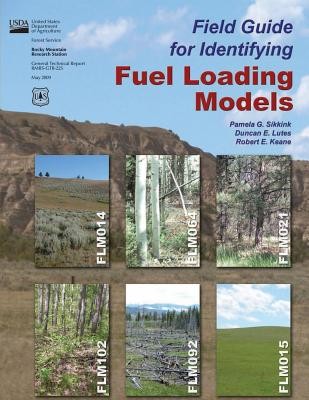
- We will send in 10–14 business days.
- Author: United States Department of Agriculture
- Publisher: CreateSpace Independent Publishing Platform
- Year: 2015
- Pages: 38
- ISBN-10: 1505876737
- ISBN-13: 9781505876734
- Format: 21.6 x 28 x 0.2 cm, softcover
- Language: English
- SAVE -10% with code: EXTRA
Field Guide for Identifying Fuel Loading Models (e-book) (used book) | bookbook.eu
Reviews
Description
Historically, fuel classifications used to estimate fire effects have been based on the vegetative characteristics of a particular site or location (Reinhardt and others 1997; Sandberg and others 2001). Vegetation-based classifications generally use cover type, structural stage, and/or habitat type (Mueller-Dombois 1964; Pfister and Arno 1980) as surrogates for describing the type and quantity of fuels on the ground and in the forest canopy (Hawkes and others 1995; Keane and others 2006; Mark and others 1995; Shasby and others 1981). The rationale for using vegetation characteristics to classify fuels is that fuels are ultimately derived from vegetation, so knowing how much fuel a particular vegetation type produces should provide an acceptable estimate of fuel load on the ground.
- Author: United States Department of Agriculture
- Publisher: CreateSpace Independent Publishing Platform
- Year: 2015
- Pages: 38
- ISBN-10: 1505876737
- ISBN-13: 9781505876734
- Format: 21.6 x 28 x 0.2 cm, softcover
- Language: English English
Historically, fuel classifications used to estimate fire effects have been based on the vegetative characteristics of a particular site or location (Reinhardt and others 1997; Sandberg and others 2001). Vegetation-based classifications generally use cover type, structural stage, and/or habitat type (Mueller-Dombois 1964; Pfister and Arno 1980) as surrogates for describing the type and quantity of fuels on the ground and in the forest canopy (Hawkes and others 1995; Keane and others 2006; Mark and others 1995; Shasby and others 1981). The rationale for using vegetation characteristics to classify fuels is that fuels are ultimately derived from vegetation, so knowing how much fuel a particular vegetation type produces should provide an acceptable estimate of fuel load on the ground.


Reviews